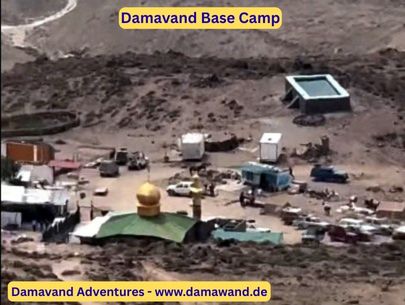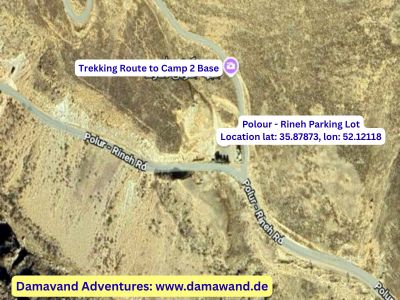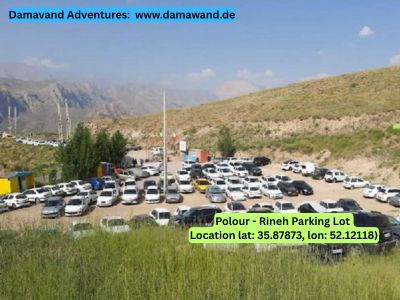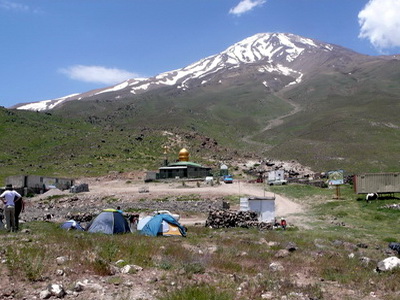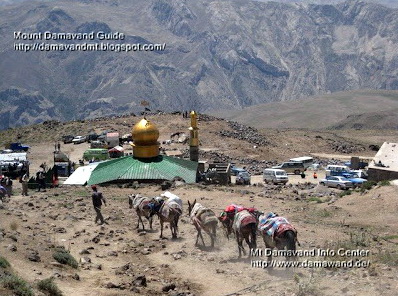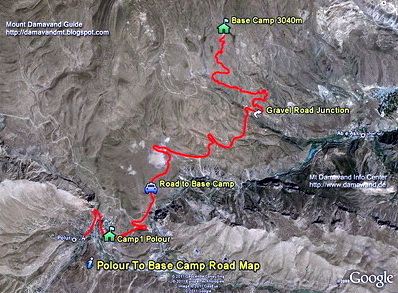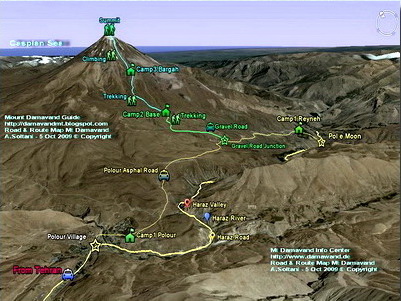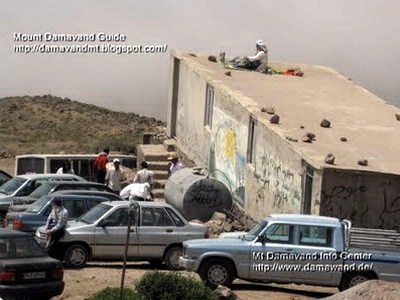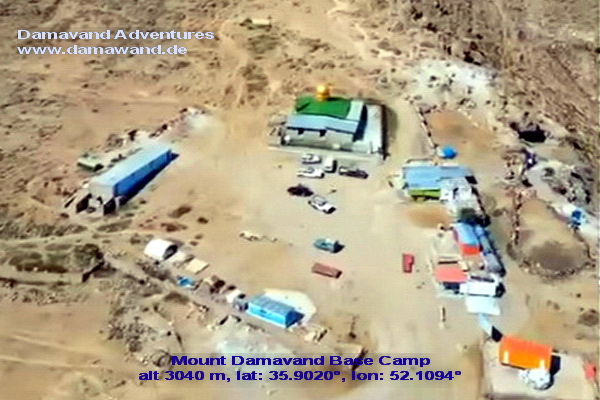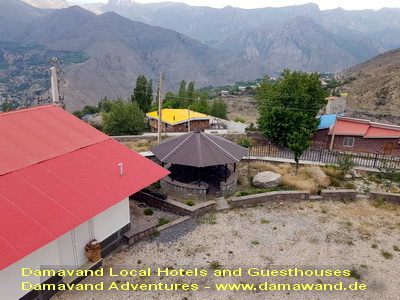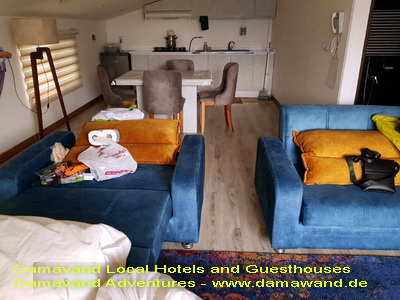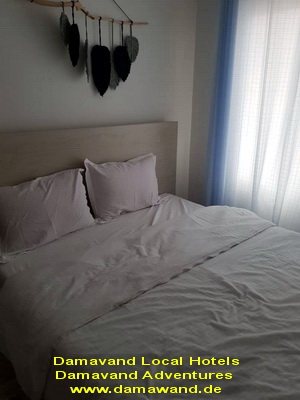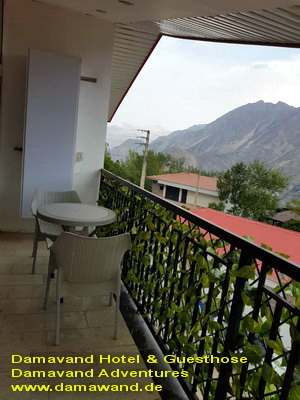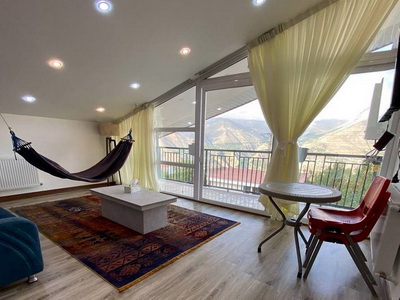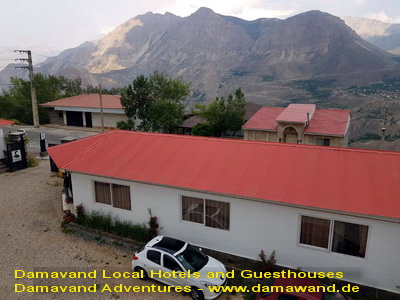Damavand Camp II – Base Camp Overview
Mount Damavand Camp II, also known as Damavand Base Camp or Goosfand-Sara, is the main starting point for climbers heading up Iran’s highest peak via the southern route—the most popular and traditional trail to the Damavand summit. This high-altitude base camp sits at about 3040 meters above sea level and serves as the primary gateway for most Damavand trekking expeditions.
The site features a simple mountain shelter, the Saheb al-Zaman Mosque, a traditional sheepfold, and open tenting areas suitable for camping. Because of its accessibility, it is often referred to by local guides as “Camp II” or simply “the Mosque.”
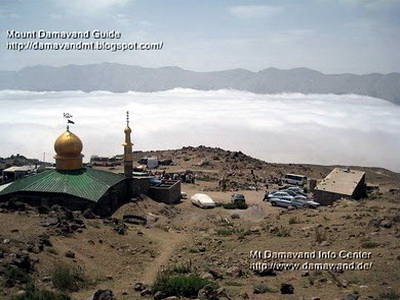
Camp 2 Base or Goosfand-Sara (Lat: 35.9020°, Lon: 52.1094°)
During the summer trekking season, 4WD vehicles carry climbers from the lower villages to Goosfand-Sara, where mules and porters can transport gear further up to Bargah-e Sevom (Camp III). Although basic supplies may occasionally be found here, it is strongly advised to bring your own food, water, and camping equipment.
Due to frequent crowding and noise—especially on weekends—many mountaineers choose to continue toward higher camps for better acclimatization and rest. Still, for beginners and trekkers, Goosfand-Sara remains the most convenient and traditional gateway to Mount Damavand’s south route.
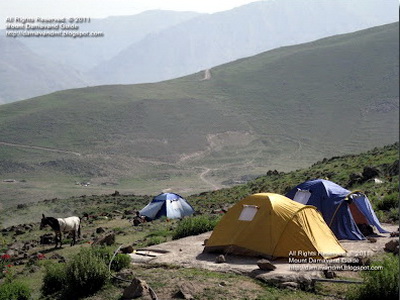
Adventure Begins at Goosfand-Sara
As the main hub of the southern approach, Damavand Camp - Goosfand-Sara connects tradition with adventure. Its mosque, simple beauty, and panoramic views mark the true beginning of every Mount Damavand expedition tour. Whether you continue to higher camps or stay overnight, Camp II stands as the symbolic and logistical heart of the Damavand climbing experience.
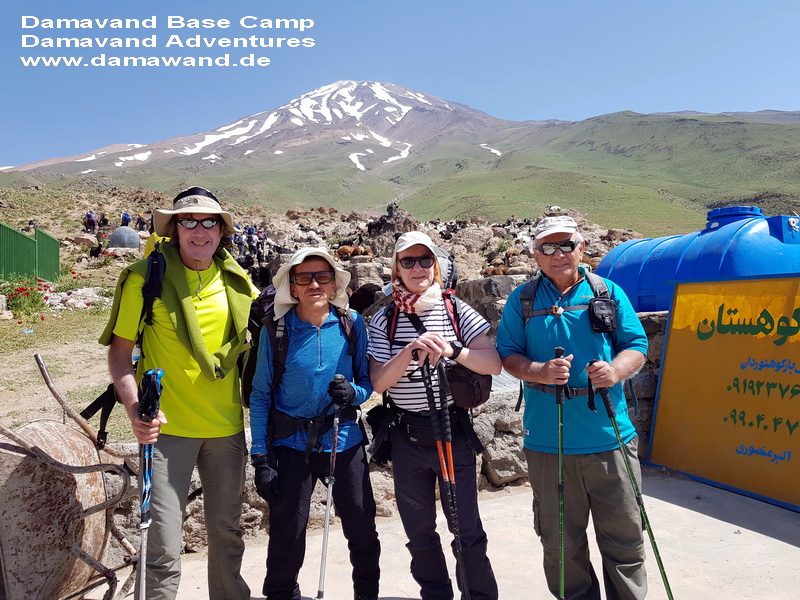
Damavand Camp 2 – Quick Accommodation Overview
During the summer season, Goosfand-Sara Base Camp often becomes overcrowded and noisy, making it less suitable for rest or acclimatization. For a more comfortable stay, bring your own tent and set it up a few hundred meters away from the main area for greater privacy and quiet.
- A – Tenting
- Use your own tent and camp slightly away from the central zone to enjoy cleaner ground and a calmer atmosphere.
- B – Shelter or Refuge
- The old shelter has two small rooms, but they are currently unusable due to broken doors and windows.
- C – Mosque
- The mosque offers a small vacant room, though it usually becomes crowded during the high season.
Please note: It is recommended to plan your accommodations carefully and consider alternative campsites to avoid the issues at Goosfand Sara.
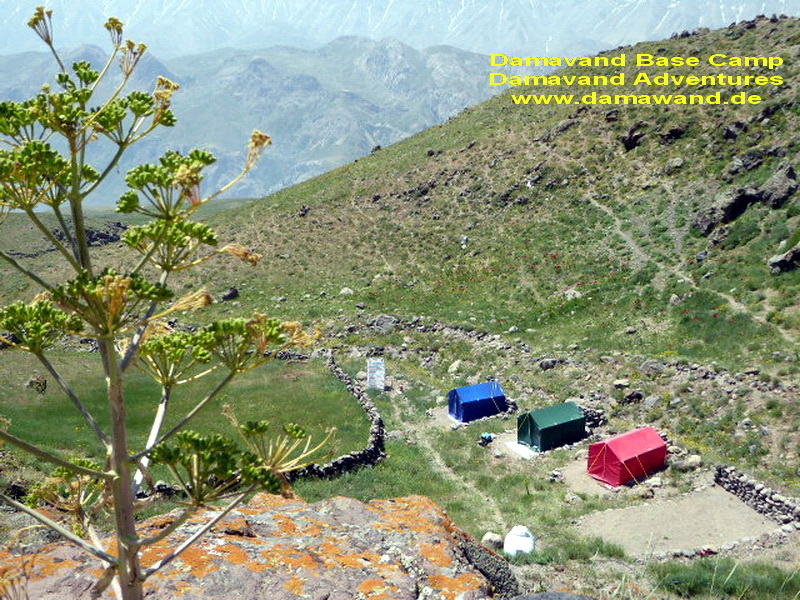
This cozy tenting area is managed by Mr. Akbar Mansouri
Accommodation and Tenting at Damavand Camp 2 Goosfand-Sara
A – Tenting
Tenting is by far the best and most practical option at Goosfand-Sara Base Camp (Camp 2) on the south route of Mount Damavand. The area provides open, flat ground suitable for pitching personal tents; however, during the summer trekking season, the main zone around the mosque and shelter becomes crowded, noisy, and dusty, especially on weekends.
For a quieter and more private experience, it is highly recommended to pitch your tent a few hundred meters away from the central camp area. Just beyond the main site, there are several private tenting spots that offer a calmer atmosphere and better conditions for rest and acclimatization.
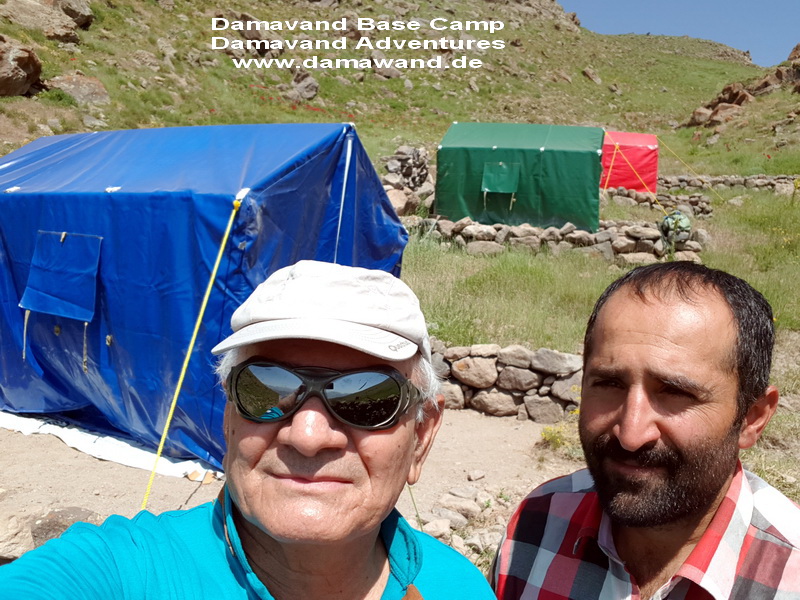
Goosfand Sara Private Tenting Area
Managed by Mr. Akbar Mansori (Right)
Some of these belong to Mr. Akbar Mansouri, a trusted and long-time local host who provides well-maintained tents and camping space slightly away from the busy zone. With his coordination, visitors can use or rent these tents, which is especially convenient for those who arrive late or prefer a ready setup.
Camping in these private or distant areas ensures greater comfort, safety, and privacy, allowing climbers to rest well before ascending toward Camp 3 (Bargah-e Sevom).
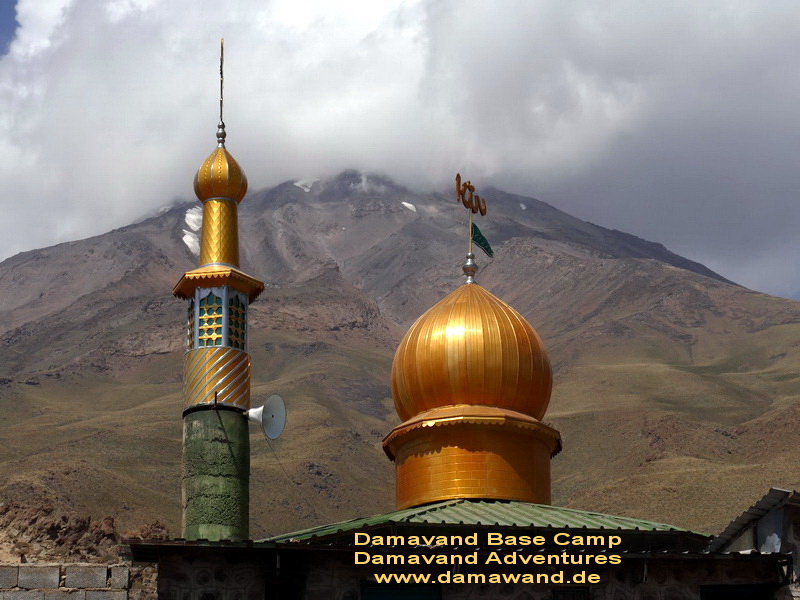
Saheb Al Zaman Mosque
Important Note for Climbers
Damavand Base Camp is the primary gateway to the south route, but during summer it can become crowded and noisy, making it less suitable for rest or acclimatization. If you plan to stay overnight, it is recommended to bring your own tent and pitch it a few hundred meters away from the central area for better privacy, comfort, and sleep quality.
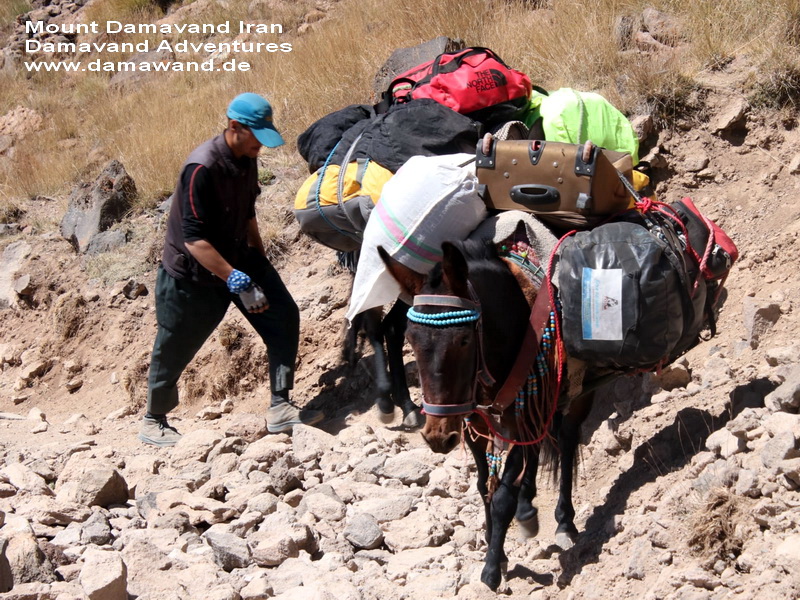
At Damavand Camp II – Base Camp, the use of mules and local porters is a traditional and essential part of every Mount Damavand expedition. Many climbers begin their ascent from this point, where they can easily hire mules or porters to carry heavy backpacks, food supplies, and camping equipment up the southern route toward Damavand Camp III – Bargah-e Sevom. This service is especially valuable for international trekkers who prefer to save their strength for the steep and high-altitude climb ahead.
Managed by local villagers, these services not only support mountaineers but also help sustain the livelihoods of families living around Damavand National Park. The presence of mules and porters at Goosfand-Sara reflects the region’s long-standing mountaineering culture, where human endurance and traditional knowledge work together in harmony. This cooperative system ensures smoother logistics, safer ascents, and a meaningful connection between visitors and the local community of Mount Damavand.
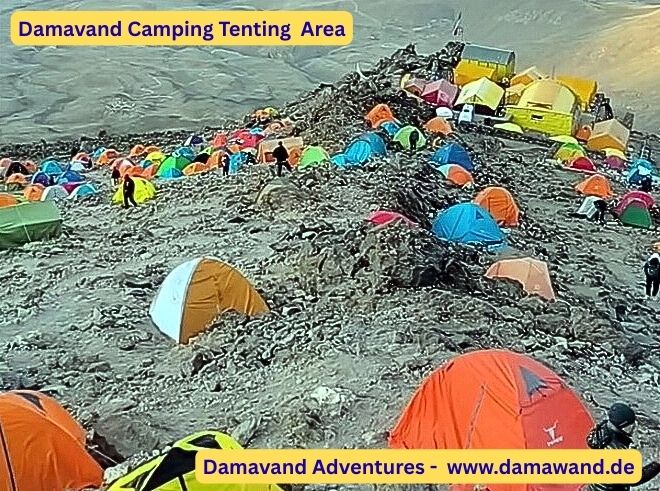
Access and Facilities at Goosfand-Sara (Camp II)
During the climbing season, off-road vehicles transport climbers and gear from lower camps to Goosfand-Sara. While basic supplies like water and food may be available, it is strongly recommended to bring your own provisions for reliability and comfort. From this base camp, mules and local porters can be hired to carry equipment up to Damavand Camp III - Bargah-e Sevom. Accommodation at Goosfand-Sara is limited, consisting of an old two-room shelter, a mosque, and a designated tenting area. In Farsi, the campsite is called گوسفند سرا.
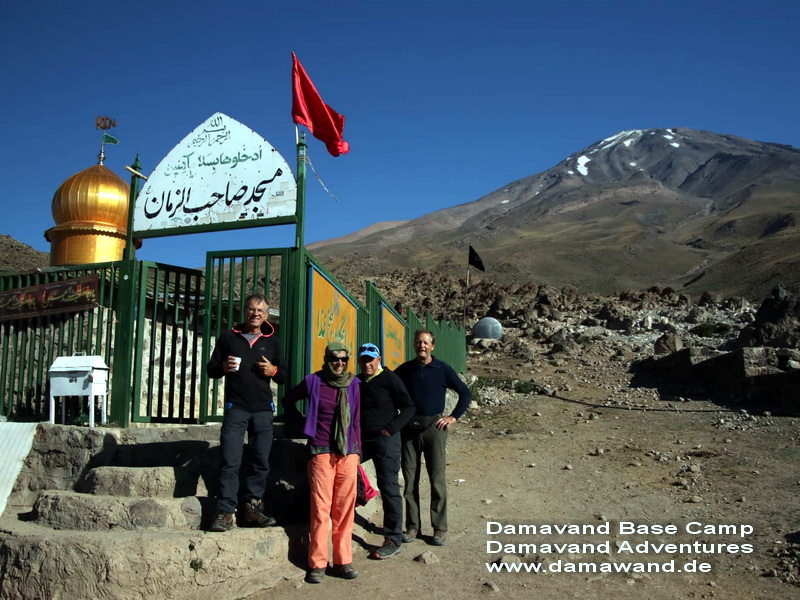
Saheb Al-Zaman Mosque
Climbers seeking to avoid overcrowding at Camp II may prefer alternative overnight options, such as Camp 3 - Bargah Sevom or other higher campsites. With proper planning and logistics, it is often more efficient to bypass the lower camps entirely and proceed directly to higher camps. These locations provide improved conditions for acclimatization and a more restful approach to the summit.
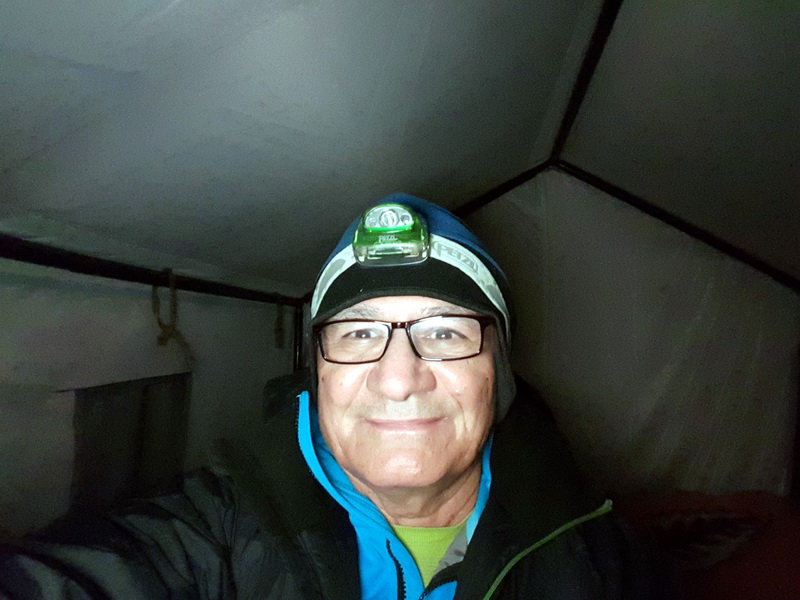 About the Author: This guide to Damavand Camp 2 – Base Camp is written and verified by Mr. Ardeshir Soltani,
an Iranian mountain guide and trekking expert with decades of experience on Mount Damavand and across the Alborz Mountain Range.
He has guided many international climbers to Damavand’s summit and is known for his precise knowledge of routes, camps,
and local weather of Damavand. Through this guide, Mr. Soltani shares his firsthand experience to help international climbers
enjoy safe and responsible mountain travel in Iran.
About the Author: This guide to Damavand Camp 2 – Base Camp is written and verified by Mr. Ardeshir Soltani,
an Iranian mountain guide and trekking expert with decades of experience on Mount Damavand and across the Alborz Mountain Range.
He has guided many international climbers to Damavand’s summit and is known for his precise knowledge of routes, camps,
and local weather of Damavand. Through this guide, Mr. Soltani shares his firsthand experience to help international climbers
enjoy safe and responsible mountain travel in Iran.
